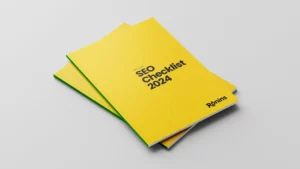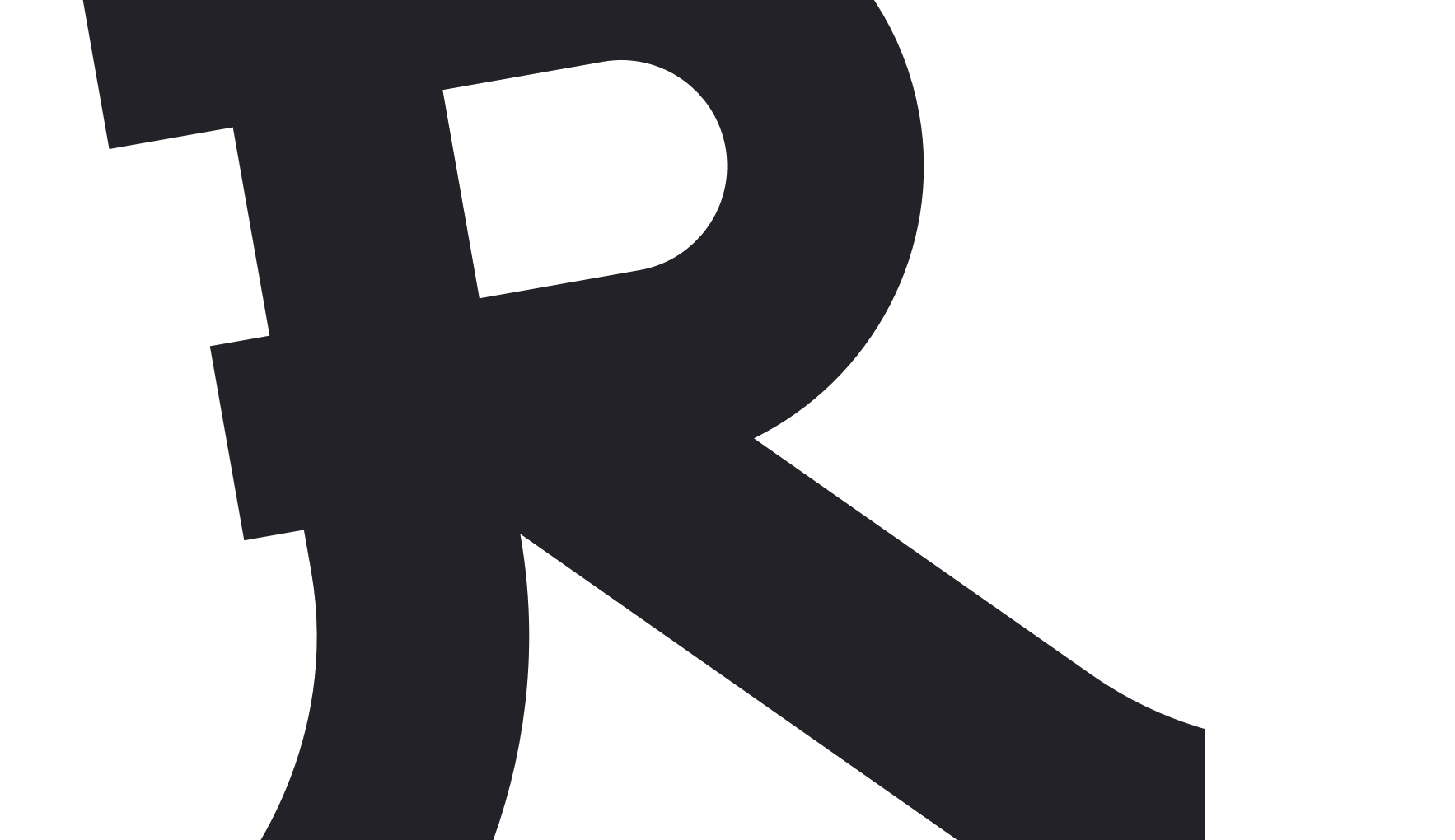
What Is Bespoke Web Design
Table of Contents
TLDR
Bespoke web design involves creating a unique, tailored website from scratch to align precisely with a business’s needs, goals, and brand identity.
This approach contrasts with off-the-shelf templates and pre-designed layouts that offer limited customisation. While templates provide a quick, cost-effective solution suitable for immediate online presence, they often lack the flexibility and scalability required for growing businesses.
In contrast, bespoke designs offer complete customisation, optimised performance, and the ability to scale and adapt to evolving requirements. These make them a strategic investment for businesses aiming for a distinctive and effective online presence.
Introduction

As the founder of Ronins, a digital agency that has proudly built bespoke websites for over three decades, I’ve often seen and struggled with, almost every possible web design challenge you can imagine. From pioneering simple HTML pages back in the early days of the web to now delivering complex, personalised digital platforms for ambitious startups and global enterprises, I’ve always believed deeply that great web design is fundamentally about putting our customers’ vision and their customers’ experience first.
So, What Exactly Is Bespoke Web Design?
To put it simply, bespoke web design means crafting a website from the ground up, entirely tailored around your specific target audience, business goals, brand identity, bespoke functionality and customer expectations. It’s a carefully considered, thoughtfully designed, and precisely executed digital experience that matches your unique vision.
Unlike template-based designs, often found on platforms like WordPress, Wix, and Squarespace, bespoke web design is not about forcing your ideas into someone else’s framework. It’s about starting with a blank canvas, understanding precisely what your customers want and need, and then building a website specifically to meet those expectations.
In my journey with Ronins, we’ve occasionally underestimated the power of genuinely bespoke solutions. Early on, we sometimes took the easier path of templates or off-the-shelf themes because they were quicker and simpler to deploy. However, we soon discovered that shortcuts often compromised our customers’ real objectives, leaving them feeling restricted or stuck further down the line. These early mistakes taught us an important lesson: bespoke solutions aren’t just a luxury—they’re often necessary for businesses serious about growth.
Why More Businesses Are Choosing Bespoke Design (And Why You Should Too)
Over the years, I have seen a noticeable shift in what businesses expect from their websites and a web design agency. As online competition intensifies, users now demand more than basic functionality; they want seamless, personalised, and frictionless experiences. Customers judge your credibility in milliseconds, and increasingly, that credibility depends directly on how well-designed your website is.
Forward thinking startups, ambitious mid sized businesses, and leading global brands have recognised that to stand apart, a templated website simply isn’t enough. They’re choosing bespoke web design because it aligns precisely with their strategy, drives stronger results, and demonstrates their commitment to providing customers with the best possible experience.
I’ve personally experienced how investing extra time to deeply understand a client’s customer base, pain points, and ambitions dramatically improves outcomes. Bespoke web design ensures your website becomes not just a business tool, but a strategic asset capable of driving growth.
What You’ll Learn in This Article
In this article, I want to share with you the insights and experiences gained through decades of trial, error, and success at Ronins. I promise to be honest about what we’ve learned, including the hard lessons that shaped our approach. Together, we’ll explore why bespoke web design consistently outperforms template-based approaches in terms of conversion rates, user experience, SEO performance, security, and long-term scalability.
By the end, you’ll understand exactly why a bespoke website isn’t just a nice-to-have, it’s an essential investment for any business looking to succeed in today’s digital landscape. More importantly, you’ll walk away with actionable insights, clarity, and confidence about how a genuinely bespoke web presence can become your business’s greatest digital advantage.
• • •
The Evolution of Web Design: From HTML to High-Performance Experiences
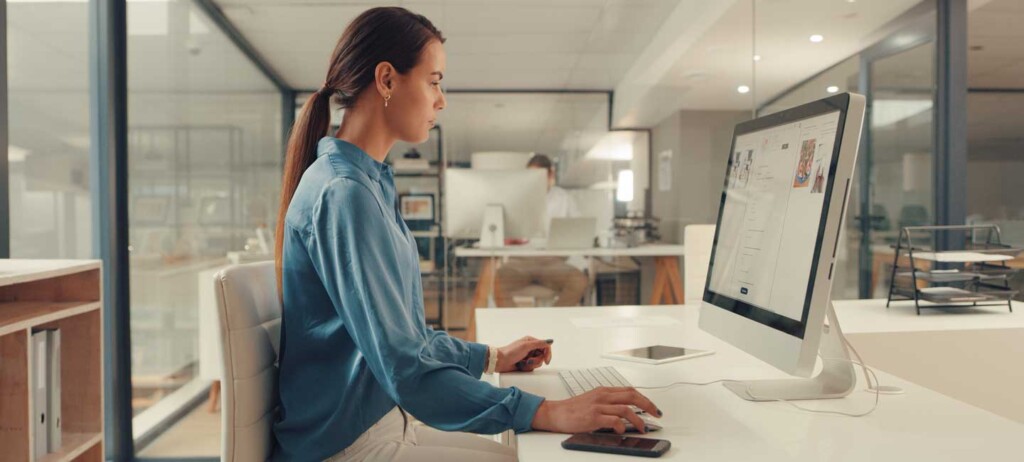
Having spent more than 30 years crafting websites, I’ve had a front-row seat in the extraordinary evolution of web design. It’s been an exciting journey, filled with breakthroughs, innovations, and admittedly, a few valuable mistakes along the way.
The Early Days: Static HTML Websites (1990s)
Back in the early ’90s, web design was straightforward yet deeply labour-intensive. Every bespoke web development we built began as hand-coded, static HTML pages, and you needed deep technical knowledge. These new websites were mostly text-based, with minimal graphics, partly because internet speeds at the time were painfully slow and partly because browsers simply couldn’t handle much else.
Did you know? The average web page in the mid-’90s contained just a handful of kilobytes—today, pages regularly exceed 2MB. (Content Snare)
While the development process was cumbersome, it ensured each website we created was truly bespoke by necessity. The experience taught me the value of strategic simplicity, something I still champion today.
Dynamic Websites & CMS Platforms: The Internet Grows Up (Late 1990s–2000s)
As technology rapidly improved, new tools emerged, transforming how we designed websites. In 1996, the introduction of Cascading Style Sheets (CSS) revolutionised the visual presentation of websites, while JavaScript brought interactivity to previously static pages (Content Snare).
Then, in 2003, WordPress entered the scene, fundamentally altering the digital landscape by empowering non-developers to build and manage content-rich websites independently.
Key Stat: Today, WordPress powers over 40% of all websites globally, highlighting its massive influence (Content Snare).
• • •
Understanding Bespoke Web Design: Why ‘Tailored’ Really Matters
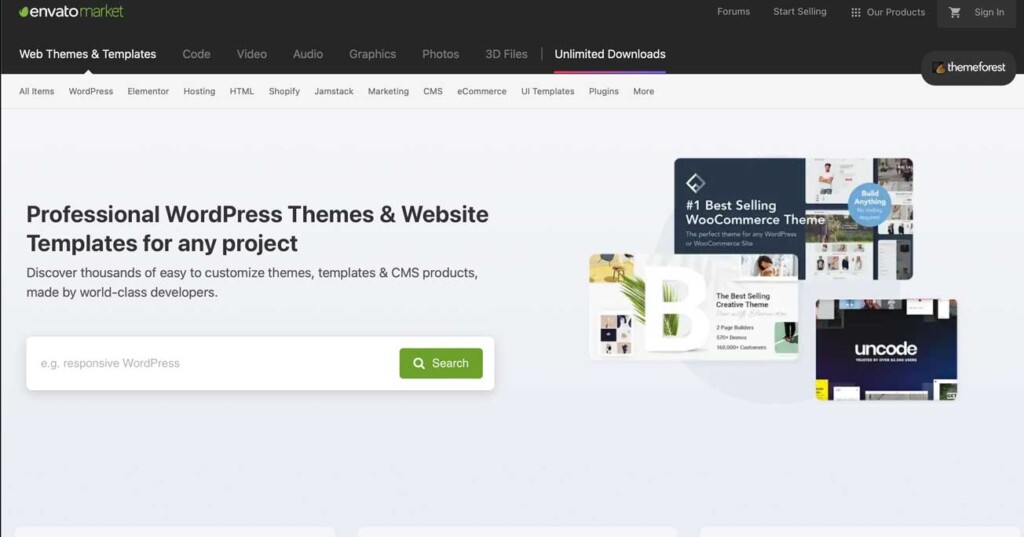
I’ve often asked: “What exactly makes bespoke web design different from using a template?” The question is straightforward, yet the answer has layers of depth.
Bespoke Web Design: Built Entirely Around You
When I talk about bespoke web design, I mean building a website completely from scratch—handcrafted specifically for your brand, your business objectives, and most importantly, your customers. At Ronins, bespoke isn’t a buzzword; it’s about creating a truly tailored solution that perfectly fits your business without any redundant code, rather than forcing your goals into a pre-built box.
This process begins by deeply understanding what you’re trying to achieve: Who are your customers? What motivates them? How can we build a digital experience that seamlessly guides them to take action?
Did you know? Users form an opinion about your website in as little as 50 milliseconds—faster than the blink of an eye (CXL). Your design has to instantly communicate clarity, credibility, and relevance.
Every line of code, every pixel of design, and content is deliberately chosen to resonate with your customers across desktop and mobile devices. Custom design isn’t about complexity but clarity, authenticity, and purpose.
True Customisation: Aligning Design with Your Goals
The heart of bespoke design lies in customisation. Unlike templates, bespoke websites are designed around the specific goals and ambitions of your business. We don’t start by selecting a theme; we start with understanding what success looks like for you.
For instance, if your primary goal is increasing online sales, we meticulously craft a seamless checkout process tailored to your products and customers. If you’re launching a SaaS platform, we strategically design a seamless user experience to more complex features and interactive elements to guide visitors effortlessly through free trials to subscriptions.
Key Statistic: Bespoke websites, particularly in the SaaS industry, often achieve visitor-to-sign-up conversion rates as high as 11.7% compared to the industry average of 3–5% (Userpilot).
Customisation isn’t merely cosmetic; it directly impacts performance, conversions, and ultimately your bottom line.
Brand Identity: Your Website Should Be Unmistakably Yours
Your brand is unique, and your website should reflect that. When I founded Ronins, I realised early that templated solutions, despite being convenient, frequently diluted our clients’ brands. You don’t want your customers visiting your site and feeling like they’ve “seen this before.”
A bespoke design ensures that every element—from fonts and colour schemes to imagery and navigation, is thoughtfully aligned with your brand identity.
Fact: 75% of consumers judge a company’s credibility based solely on the visual design of its website (ODI Consulting).
Investing in bespoke web design signals professionalism and authenticity, essential elements for building lasting customer relationships.
User Experience: Crafted for Customer Delight
One of our core lessons at Ronins has been that exceptional user experience (UX) isn’t just desirable; it’s essential. A template design is inherently limited in its user interface; it’s created for general use, not tailor-made experiences. Conversely, custom built solutions place UX design choices at the forefront, creating intuitive journeys built around your audience’s actual behaviours and needs.
• Important Insight: 88% of online users say they’re unlikely to return after just one negative experience (ODI Consulting). Bespoke design significantly reduces this risk by eliminating friction points and enhancing clarity.
When a user visits a bespoke-designed website we’ve built at Ronins, everything feels intuitive—because it’s specifically crafted to meet their expectations.
Bespoke vs Template: Key Differences in Flexibility, Uniqueness, and Strategic Alignment
To summarise the fundamental differences clearly:
| Aspect | Template-Based Websites | Bespoke Websites |
|---|---|---|
| Flexibility | Limited by pre-defined frameworks | Unlimited possibilities tailored around you |
| Uniqueness | Generic appearance; similar to thousands of others | Distinctive, one-of-a-kind digital presence |
| Strategic Alignment | Standard features; minimal alignment with specific business goals | Deeply strategic, designed specifically around achieving your potential customers |
Throughout my years at Ronins, I’ve repeatedly observed that flexibility, uniqueness, and strategic alignment are precisely what ambitious companies need to thrive digitally. The limitations we encountered with templated solutions—rigid structures, generic appearances, and limited functionality—became clear barriers to our clients’ growth. Bespoke web design consistently eliminated these issues, offering unmatched flexibility, unique branding opportunities, and precise alignment with strategic business objectives.
Why Bespoke is Worth the Investment
Admittedly, bespoke web design initially demands a greater investment of time, effort, and budget than templates. But it’s an investment I’ve consistently seen pay off at Ronins. Custom-built sites deliver higher conversion rates, better user satisfaction, stronger brand credibility, and significantly higher returns on digital marketing efforts.
This isn’t speculation—it’s repeatedly proven by industry benchmarks and our own experiences.
• • •
Superior Page Speed & Technical Performance: Why Faster Websites Win

Over the years at Ronins, I’ve learned that website performance isn’t just a technical matter—it’s a business-critical one. When we first began building websites, speed was often overlooked in favour of rich visuals or complex functionality. Frankly, we made mistakes by assuming our users would wait those extra seconds. But we quickly discovered that page speed matters, a lot.
Why Does Page Speed Matter?
The impact of page speed goes far beyond a faster-loading website. It directly influences user experience, conversions, and even your brand’s credibility.
Here’s why page speed truly matters:
- 1. User Experience & First Impressions – Users are impatient—there’s no way around it. Your customers expect websites to load almost instantly. When they don’t, users don’t just get frustrated; they often leave, never to return. Powerful Fact: 47% of website visitors expect your site to load in less than 2 seconds, and 53% of mobile usersabandon a site taking over 3 seconds to load (Think with Google).
- 2. Bounce Rates & Lost Opportunities – Slow sites aren’t just annoying; they cost businesses real opportunities. High bounce rates, where users leave your site quickly, translate directly to fewer leads and fewer sales. Key Insight: For each additional second your site takes to load, your conversion rate drops by up to 20% (Think with Google). That’s real revenue disappearing with every extra second.
- Conversions & Revenue – Faster loading speeds significantly boost conversions, directly increasing sales. Companies who optimise speed see measurable improvements in revenue.
- Proven Statistic: According to a famous Akamai study, even a one-second delay in page load can reduce conversions by 7% (Cloudflare). For a company turning over millions online, these losses quickly add up.
The Bespoke Advantage: Streamlined Code & Faster Load Times
One of the greatest strengths of bespoke web design, something we passionately emphasise at Ronins, is the ability to create streamlined, highly efficient websites. Templates often come burdened with bloated code, unnecessary plugins, and excess features you never actually use. These extras slow your website dramatically, undermining user experience and hurting your bottom line.
In contrast, bespoke websites are precision-built:
- Optimised Code: Our custom websites at Ronins contain only what’s necessary. No extra scripts, no bloated plugins, just clean, efficient, optimised code.
- Faster Load Times: By minimising unnecessary elements, bespoke sites significantly reduce load times, ensuring exceptional performance on both desktop and mobile.
- Improved Google Scores: Bespoke websites consistently achieve higher scores in Google’s Core Web Vitals—an essential ranking factor for SEO and performance.
Real Results: Proven Improvements with Bespoke Design
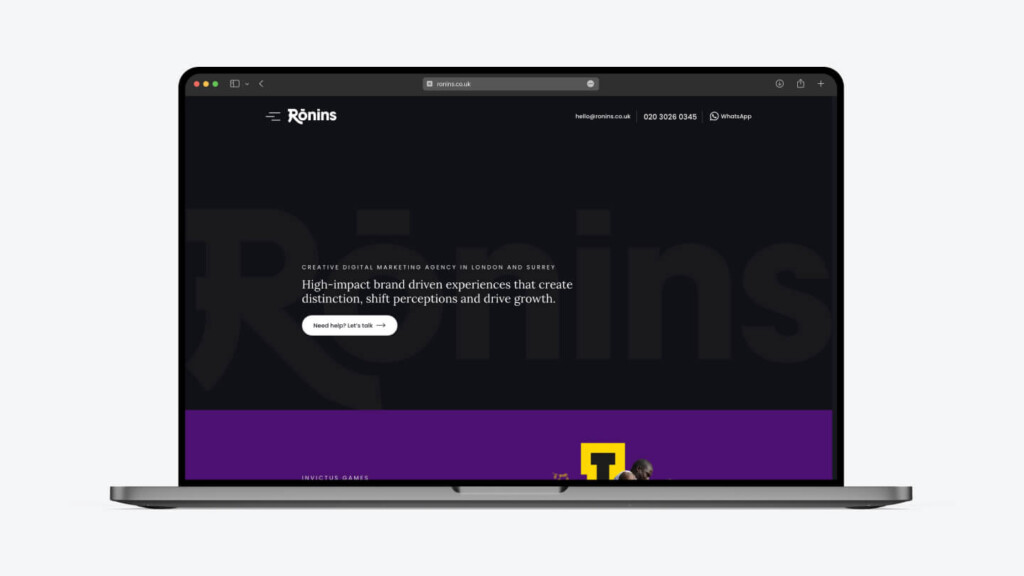
We don’t just believe bespoke designs deliver superior speed, we’ve seen it happen repeatedly with our clients at Ronins. Here’s a real-world example to illustrate this clearly:
Case Study: Achieving Google PageSpeed Insights Scores of 100/100
One of our recent bespoke redesign projects involved transforming our sluggish, template based website into a fully custom-built digital experience.
- Challenge: Our original WordPress-based templated site was slow, achieving a Google PageSpeed Insights score of just 35/100 on mobile and 50/100 on desktop.
- Our Approach: We completely rebuilt the site from scratch, carefully optimising every line of code, compressing images intelligently, eliminating unnecessary scripts, and optimising hosting environments.
- Result: The bespoke design achieved remarkable improvements, scoring an unprecedented 100/100 on both desktop and mobile on Google PageSpeed Insights. These scores translated directly into lower bounce rates, higher conversions, and significantly improved user satisfaction.
• • •
User Experience: Tailored for Success
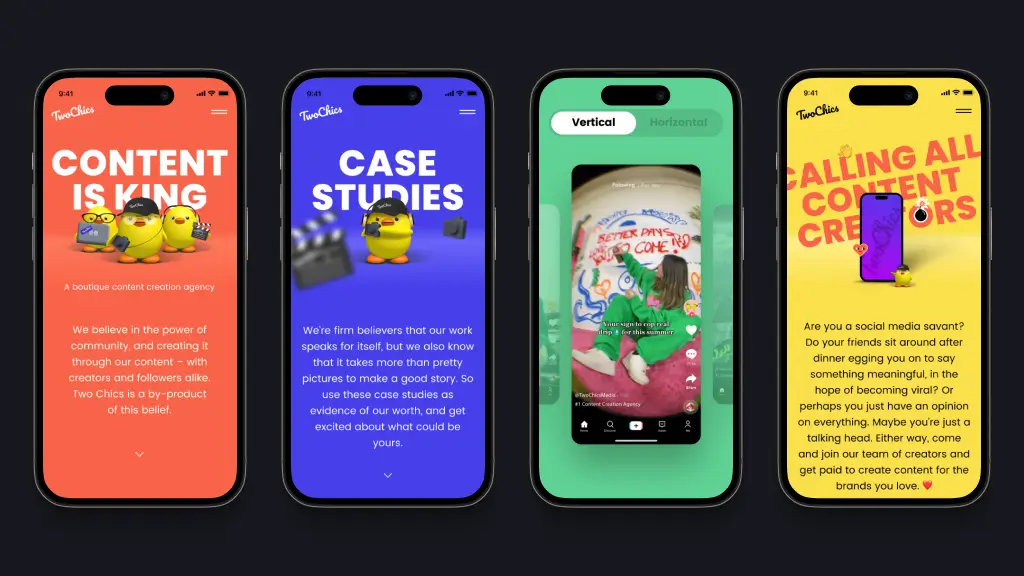
I’ve learned a fundamental truth: Great web design always puts the user first. In the early days, we often focused too heavily on aesthetics or functionality alone, sometimes neglecting the true essence of the user’s journey. Admittedly, we made mistakes. Yet, those mistakes taught me valuable lessons about the critical importance of exceptional user experience (UX).
Why Does UX Matter? Retention & Satisfaction
Here’s why UX matters deeply to your business:
- Customer Retention – A website that’s intuitive, enjoyable, and genuinely helpful creates loyalty. Users who effortlessly achieve their goals on your site are far more likely to return. Key Statistic: After just one poor experience, 88% of online consumers say they’re significantly less likely to return to that website (ODI Consulting). That’s how quickly customer trust can vanish.
- Customer Satisfaction & Trust – When users find exactly what they need without friction or frustration, their satisfaction increases significantly. Higher satisfaction builds trust, a fundamental pillar for long-term business growth. Fact: 75% of consumers judge a company’s credibility solely on its website design and user experience (ODI Consulting).
Simply put, investing in UX means investing in trust and long-term relationships.
Why Bespoke Web Design Creates Superior UX
Generic templates, by nature, are built for broad appeal, meaning they’re rarely a perfect fit for your unique users. Bespoke web design eliminates these compromises, focusing solely on creating an ideal experience explicitly tailored to your customers’ needs.
Here’s how bespoke web design dramatically improves UX:
Precise, Intentional User Journeys
We take time to understand exactly how your customers think, move, and act, then intentionally craft paths that effortlessly guide them to conversions. Templates can’t offer this precision, and a custom approach thrives on it.
Clear & Intuitive Navigation
Nothing frustrates users more quickly than confusing navigation. Bespoke designs solve this by placing menus, buttons, and key content exactly where your users expect them. Custom designed navigation and user friendly landing pages significantly reduces user friction, leading directly to higher engagement and satisfaction.
Effective Calls-to-Action (CTAs)
Bespoke designs empower strategic placement of tailored CTAs exactly where they make the greatest impact. Unlike templates offering generic, repetitive placements, bespoke solutions precisely align CTAs with user intent, increasing conversions.
Did you know? Companies using personalised CTAs can achieve up to 202% better conversion rates than those relying on generic messaging (HubSpot).
The Powerful Benefits of UX Customisation
Bespoke web design provides powerful customisation benefits directly linked to higher user engagement, reduced friction, and enhanced satisfaction. Here are key benefits we’ve consistently delivered at Ronins:
Adaptive Features & Personalisation
Custom websites can adapt dynamically based on user behaviour, preferences, or location. Personalisation significantly increases relevance and engagement, something templates struggle to deliver effectively.
- Insightful Statistic: Personalised web experiences deliver on average 19% higher sales than non-personalised sites (Evergage).
Reduced Clutter & Improved Clarity
A tailor-made site only includes what’s essential, no unnecessary widgets or bloated scripts. This reduction in clutter significantly improves clarity, allowing users to focus exactly on what matters most, leading to higher conversions and satisfaction.
Enhanced Engagement & Repeat Visits
Great UX encourages users to engage deeply, return more often, and even become brand advocates. When visitors feel your site understands them, they become loyal, repeat visitors.
- Powerful Fact: A well-crafted user experience can raise website conversion rates by up to 400% (Forbes).
Real-World UX Success Story from Ronins
To illustrate precisely why bespoke UX matters, here’s a quick example from our work at Ronins:
Case Study: UX-driven Redesign Increases Conversions by 250%
A SaaS client initially approached us with a template-based site suffering from low conversions and high bounce rates.
- Challenge: Users struggled to understand the product clearly, resulting in frustration and abandoned sign-ups and subscriptions.
- Our Approach: We conducted in-depth UX research and redesigned the site using bespoke design methods, creating clear navigation, intuitive user journeys, and strategically placed CTAs.
- Results: Within 90 days post-launch, conversions increased by 250%, bounce rates fell dramatically, and customer satisfaction rose significantly.
Bespoke vs Template: Key Differences in Flexibility, Uniqueness, and Strategic Alignment
To summarise the fundamental differences clearly:
| Aspect | Template-Based Websites | Bespoke Websites |
|---|---|---|
| Flexibility | Limited by pre-defined frameworks | Unlimited possibilities tailored around you |
| Uniqueness | Generic appearance; similar to thousands of others | Distinctive, one-of-a-kind digital presence |
| Strategic Alignment | Standard features; minimal alignment with specific business goals | Deeply strategic, designed specifically around achieving your business objectives |
Why Bespoke is Worth the Investment
Admittedly, bespoke web design initially demands more time, effort, and budget than template, which could be hard for a small business. But it’s an investment I’ve consistently seen pay off. Custom-built sites deliver higher conversion rates, better user satisfaction, stronger brand credibility, and significantly higher returns on digital marketing efforts.
• • •
SEO Benefits of Bespoke Web Design

I’ve also learned that having a beautifully designed website isn’t enough. It must also be discoverable. In the past, we built visually impressive sites without fully considering search engine optimisation (SEO) and yes, we made mistakes. Those early experiences demonstrated just how essential SEO is for business success.
Bespoke web development and strategic SEO go hand-in-hand.
Why SEO Matters: Digital Visibility & Business Success
SEO isn’t just about rankings—it’s fundamentally about visibility, credibility, and customer acquisition. When customers search for products or services online, appearing prominently in search results significantly boosts trust, engagement, and revenue.
Powerful Fact: Over 68% of all online experiences start with a search engine (BrightEdge). You lose critical visibility and valuable opportunities if your website isn’t ranking well.
How Designs Align Naturally with Google’s Core Ranking Factors
Websites aren’t just visually appealing; they’re fundamentally optimised for Google’s critical ranking factors, which include:
1. Page Speed
Google clearly prioritises fast-loading sites. Bespoke designs, through their streamlined code and efficient structure, naturally excel here.
• Key Insight: Google’s data indicates that even a 1-second delay in load time can reduce conversions by up to 20%(Think with Google). Bespoke sites often achieve exceptional load speeds, significantly boosting their rankings.
2. Mobile Responsiveness
With more than half of all web traffic now mobile, responsive design isn’t optional—it’s mandatory. Bespoke web designs offer unmatched flexibility in crafting exceptional mobile experiences.
• Important Statistic: Over 60% of web traffic globally is mobile (Statista). Bespoke design ensures your site performs flawlessly on all devices, directly improving mobile search visibility.
3. Structured, Relevant Content
Google values structured, easily crawlable content. Bespoke designs allow precise control over content structure, from logical URL paths to clear heading hierarchies, ensuring your content aligns seamlessly with search engine expectations.
Why Bespoke Web Design Offers Superior SEO Flexibility
Advanced Schema Markup
Schema markup helps search engines better understand and categorise your content, enhancing your appearance in search results. Templates rarely support advanced schema effectively. Bespoke designs integrate schema precisely tailored to your industry, products, or services, significantly boosting visibility.
• Did you know? Websites using advanced schema markup can achieve up to 30% higher click-through rates from search results (Search Engine Journal).
Clean, SEO-friendly URLs
Template-based websites often produce lengthy, confusing URLs, negatively affecting SEO. Bespoke designs enable concise, clear, keyword-rich URLs that improve user experience and enhance Google rankings.
• Fact: Clean, readable URLs can increase click-through rates by up to 45% compared to generic or complex URLs (Backlinko).
Seamless Integration of SEO & User Experience (UX)
One of the most powerful advantages of a custom user experience is something we’ve consistently leveraged, its the seamless integration of SEO and UX strategies. Great SEO isn’t only about attracting visitors; it’s about keeping them engaged once they arrive. Bespoke solutions excel at this integration:
User-focused Content: By aligning SEO with customer needs, bespoke designs ensure visitors find exactly what they’re looking for, quickly and effortlessly.
Lower Bounce Rates: Strategic alignment of UX and SEO significantly reduces bounce rates, improving your website’s authority and rankings.
Higher Conversions: A site designed to align SEO with UX delivers more targeted traffic that genuinely converts into leads and customers.
Insightful Statistic: A combined strategy of strong UX and SEO can improve conversion rates by up to 200%compared to isolated SEO efforts (Forbes).
Bespoke vs Template: Key Differences in Flexibility, Uniqueness, and Strategic Alignment
To summarise the fundamental differences clearly:
| Aspect | Template-Based Websites | Bespoke Websites |
|---|---|---|
| Flexibility | Limited by pre-defined frameworks | Unlimited possibilities tailored around you |
| Uniqueness | Generic appearance; similar to thousands of others | Distinctive, one-of-a-kind digital presence |
| Strategic Alignment | Standard features; minimal alignment with specific business goals | Deeply strategic, designed specifically around achieving your business objectives |
• • •
Enhanced Security and Reduced Risks
Security isn’t just an IT issue, it’s a fundamental business imperative. I’ve witnessed firsthand the significant damage caused by website breaches, mainly when clients initially chose template-based solutions. Yes, we’ve learned tough lessons, sometimes through experiences we wish we’d avoided.
The Security Challenge with Template-based Websites
Platforms like WordPress, Wix, and Shopify changed the digital landscape by enabling easy, affordable website creation. Yet, their popularity has made them attractive targets for cyberattacks:
- Key Statistic: Over 60,000 WordPress sites are hacked daily (Digital Sales), largely due to vulnerabilities in commonly used templates, plugins, and outdated software.
- Sobering Fact: A security audit by Sucuri found that 78% of hacked websites in their sample used WordPress (Digital Sales).
The reality is stark: template-based websites carry inherent risks because they rely heavily on third-party plugins, generic code, and themes used by thousands or millions of sites globally. One vulnerability discovered in a popular plugin or template can instantly expose thousands of websites to compromise.
Why Bespoke Websites Provide Superior Security
1. Fewer Third-party Dependencies
A bespoke website only incorporates precisely what’s needed. You aren’t reliant on dozens of third-party plugins or themes, dramatically reducing your overall attack surface.
Important Fact: According to cybersecurity studies, third-party components are responsible for nearly 80% of website security breaches (IBM Security).
2. Lower Exposure to Mass-targeted Cyberattacks
Because bespoke websites aren’t built from common templates, they’re less vulnerable to automated mass-targeted attacks that frequently exploit popular CMS platforms.
Did you know? Hackers regularly use bots to target thousands of template-based sites simultaneously. Bespoke websites, uniquely coded, significantly reduce the effectiveness of these automated attacks.
3. Proactive Security Measures Integrated from Inception
Bespoke web design allows us to integrate essential security measures right from the start, including:
- Strong encryption protocols
- Secure authentication methods
- Real-time monitoring and intrusion detection
- Regular security audits and immediate vulnerability patching
This proactive approach makes your bespoke website far more resilient, secure, and trusted.
Summary: Why Bespoke Web Design Significantly Enhances Security
Here’s a concise comparison illustrating exactly why bespoke solutions at Ronins consistently deliver stronger security compared to template-based alternatives:
| Security Aspect | Template-based Websites | Bespoke Websites |
|---|---|---|
| Third-party Dependencies | Numerous; high exposure to vulnerabilities | Minimal; greatly reduced attack surface |
| Risk of Mass-targeted Attacks | High, due to standardised templates & plugins | Significantly lower, thanks to unique codebase |
| Proactive Security Integration | Limited; security often reactive, reliant on plugins | Integrated security from design inception |
| Incident Frequency | Often frequent due to shared vulnerabilities | Dramatically reduced; tailored security measures |
• • •
Long-Term Scalability and Business Growth

In our early years, we sometimes underestimated the importance of scalability. We delivered beautiful websites that looked beautiful at launch, but struggled as businesses expanded or markets evolved.
Today, I passionately advocate for bespoke web design because it’s not just about meeting your current needs, it’s about positioning your business for sustained growth and adaptability.
What Is Scalability, and Why Does It Matter?
Scalability is simply your website’s ability to grow and adapt seamlessly as your business evolves, without major development work or costly rebuilds. A scalable website efficiently handles increased traffic, new product lines, technological integrations, and shifting customer expectations.
- Insightful Statistic: Businesses that fail to prioritise scalability can spend up to 70% more on website redevelopment compared to those who planned for growth from the outset (Forrester Research).
Bespoke Web Design: Built for Growth, From the Ground Up
Here’s exactly how bespoke web design ensures your long-term scalability:
- Flexibility for Business Expansion – Whether you’re adding new services, products, or entire business divisions, bespoke websites effortlessly scale. At Ronins, we deliberately build flexible architectures designed explicitly to accommodate future growth, ensuring seamless expansions without costly disruptions.
- Easy Technological Integration – As your business evolves, you’ll inevitably adopt new technologies—CRMs, payment gateways, analytics platforms, or marketing tools. Bespoke websites are specifically engineered to integrate smoothly with these emerging technologies, preventing costly rebuilds and compatibility issues.
- Adaptability to Evolving Customer Needs – Customer expectations continuously evolve. With bespoke design, we ensure your website is inherently adaptable—enabling regular enhancements that align precisely with your users’ shifting preferences and behaviours.
Maintainability and Ongoing Enhancements: Keeping Your Website Agile
Another critical advantage bespoke design offers is simplified maintainability. Unlike rigid template solutions, bespoke sites make ongoing enhancements straightforward and cost-effective:
- Easy-to-Maintain Codebase: Custom-built sites utilise clean, well-organised code that’s easy to update, enhancing stability and reducing long-term maintenance costs.
- Rapid Feature Enhancements: Bespoke designs allow your team to quickly roll out new features or updates without expensive re-platforming efforts, keeping your digital presence consistently fresh and relevant.
- Improved Longevity: Because bespoke websites evolve naturally alongside your business, their overall lifespan is significantly extended, maximising your initial investment.
- Fact: Businesses using bespoke web designs typically reduce website maintenance and enhancement costs by up to 40% over five years compared to template-based alternatives (McKinsey Digital).
Summary: Why Bespoke Web Design Ensures Long-term Scalability and Growth
Here’s a clear summary illustrating precisely why bespoke design at Ronins consistently delivers superior scalability compared to template-based solutions:
| Scalability Aspect | Template-based Websites | Bespoke Websites |
|---|---|---|
| Business Expansion | Limited flexibility; costly & challenging to expand | Highly flexible; easily accommodates new products, services, and markets |
| Technological Integration | Often challenging, limited integration options | Effortless integration with new technologies, CRM, payment systems |
| Adaptability to Customer Needs | Restricted by fixed templates; costly modifications | Quickly adapts and evolves to changing user preferences |
| Maintenance & Enhancements | Frequently costly and complicated due to rigid templates | Cost-effective, straightforward enhancements and maintenance |
• • •
Bespoke vs Templates: The Cost-Benefit Analysis
One of the most common questions businesses ask me is: “Is bespoke web design worth the higher upfront cost compared to templates?” It’s a fair question—and honestly, in our early days, even we weren’t fully convinced about investing significantly more upfront. We experimented with cheaper, template-based solutions to save costs, and yes, we learned the hard way.
Upfront Investment vs Long-Term ROI
When comparing bespoke websites to templates, the most immediate difference businesses notice is cost:
- Template-based websites typically have lower upfront costs due to ready-made designs and structures.
- Bespoke websites demand greater initial investment due to extensive planning, custom coding, tailored design, and in-depth strategic work across different devices.
However, it’s essential to consider the long-term return on investment (ROI), not just initial spend. Custom design consistently outperforms template-based solutions economically over time, generating far greater returns.
- Key Statistic: Companies investing in bespoke, strategically designed digital experiences achieve up to 32% higher annual growth compared to competitors using template-based solutions (McKinsey Digital).
This difference in ROI arises from bespoke design’s superior performance, better conversion rates, enhanced SEO visibility, greater scalability, ability to add features and custom layouts, and significantly lower long-term maintenance and redevelopment costs.
Why Market-Leading Companies Choose Bespoke Design (and You Should Too)
Leading global companies—like Apple, Tesla, and Nike—don’t choose bespoke web design because they have limitless budgets; they choose it because it delivers measurable strategic advantage.
- Insightful Fact: Apple famously invests heavily in bespoke digital experiences because every element—speed, UX, branding, and scalability—matters immensely to their overall brand and sales performance (Netcentrics).
For these market leaders, bespoke web design is not about aesthetics alone—it’s fundamentally about revenue, brand differentiation, customer loyalty, and sustained competitive advantage. They’re willing to invest more upfront precisely because they clearly understand the exceptional returns bespoke solutions deliver over time.
When Does Bespoke Web Design Outperform Templates Economically?
There are several common scenarios where bespoke web design economically outperforms templates, saving businesses significant costs and enhancing revenues long-term:
- High-growth or Ambitious Businesses – For businesses anticipating rapid growth, bespoke websites quickly become cost-effective by avoiding frequent rebuilds or expensive migrations common with rigid templates.
- Complex User Journeys or Custom Functionality – If your website requires unique, complex functionality (e-commerce customisation, SaaS integrations, bespoke payment flows), template limitations quickly become expensive roadblocks. Bespoke websites remove these barriers from the outset.
- Long-term Marketing & SEO Investment – For businesses investing in digital marketing, bespoke design enhances SEO effectiveness, delivers higher conversion rates, and ultimately ensures better ROI on every marketing pound spent.
• Powerful Statistic: Businesses leveraging bespoke designs typically experience up to 400% higher conversion ratescompared to template-based sites, significantly boosting overall marketing ROI (Forbes).
• • •
Summary: Why Bespoke Delivers Superior Economic Value
Here’s a clear comparison showing exactly why bespoke web design consistently delivers superior economic returns versus template-based sites:
| Cost-Benefit Aspect | Template-based Websites | Bespoke Websites |
|---|---|---|
| Initial Investment | Lower initial spend | Higher initial spend |
| Long-term ROI | Lower, due to limited flexibility and higher maintenance | Significantly higher due to strategic performance and scalability |
| Conversion & Revenue Potential | Lower due to generic designs and UX issues | Higher, driven by tailored, strategic user experiences |
| Ongoing Costs | Higher, due to frequent rebuilds, costly integrations | Lower, thanks to easier maintenance, scalability, and adaptability |
Final Thoughts: Bespoke is Strategic Investment, Not a Cost
Reflecting on decades of experience, I’ve learned that viewing bespoke web design merely as an expense fundamentally misses the point. Bespoke web design is strategic, enerating real returns, driving revenue, maximising marketing investment, and ensuring long-term growth.
Choosing bespoke isn’t about spending more but investing smarter to deliver exceptional long-term economic benefits.
When is Bespoke the Right Choice for Your Business?
Admittedly, we’ve seen instances where businesses initially overspent on complexity they didn’t yet need. Equally, we’ve observed companies under-investing in templates, later forced into costly rebuilds.
I’ve found that the key to success is aligning your website strategy precisely with your customer needs and business goals, ambitions, and long-term vision.
How to Assess if Bespoke Design Matches Your Strategy
At Ronins, we carefully assess alignment with your strategic vision. Here are critical considerations you should evaluate:
1. Business Size and Stage
- Startups: Templates might suit small startups initially, especially if budgets are tight and requirements simple.
- Scale-ups & SMEs: Growing businesses needing to scale rapidly often find bespoke solutions quickly become essential.
- Enterprises: For established businesses with complex needs, bespoke design is typically essential from day one.
2. Market Ambitions
- If you’re aiming for significant growth, market disruption, or leading your sector, bespoke design aligns directly with your ambition by delivering unique, high-performing digital experiences.
- Lower-growth or niche local businesses may initially find template-based solutions sufficient.
3. Growth Potential
- Rapidly growing businesses quickly outpace template capabilities. If you foresee rapid expansion, integration complexities, or evolving customer journeys, bespoke design is essential.
- Businesses expecting modest growth can often initially manage with templates, though limitations quickly arise.
4. User Expectations
- Bespoke websites deliver superior user experiences, precisely tailored to evolving user expectations. If user experience is critical to your business success, bespoke design is essential.
- If your user base expects simple, standardised interactions, templates may initially suffice.
5. Competitive Landscape
- In highly competitive markets, bespoke design offers critical differentiation, stronger branding, and superior user experiences. Templates in crowded markets can negatively impact credibility and growth.
- Less competitive markets might initially tolerate template-based websites, though bespoke solutions typically offer strategic advantages.
Actionable Checklist: Bespoke or Template—Which Fits Your Business?
We use the following practical checklist to help businesses determine if bespoke or template solutions best match their needs:
| Checklist Questions | Yes ✅ | No ❌ |
|---|---|---|
| Are your digital ambitions significant (national/global market)? | ☐ | ☐ |
| Is rapid growth part of your business strategy? | ☐ | ☐ |
| Does your business require advanced custom integrations (CRM, payment systems, analytics)? | ☐ | ☐ |
| Are exceptional user experience and customer journey critical to your conversions? | ☐ | ☐ |
| Do you operate in a highly competitive industry where differentiation matters? | ☐ | ☐ |
| Will your website regularly evolve, requiring frequent enhancements and updates? | ☐ | ☐ |
| Do you anticipate significant ongoing investment in digital marketing and SEO? | ☐ | ☐ |
Evaluating Your Answers:
- Mostly Yes ✅: Bespoke web design aligns strongly with your strategic objectives, ambitions, and long-term vision. It’s likely the best investment for your digital presence.
- Mixed Answers: Consider carefully if your growth trajectory, competitive landscape, or customer expectations warrant bespoke investment sooner rather than later.
- Mostly No ❌: Template-based solutions may initially suffice, though revisit your needs regularly as your business evolves.
Let’s Talk About Your Needs
If you’re still uncertain, I’d encourage you to reflect deeply on the checklist above and consider conversing with us at Ronins. Together, we can evaluate your needs, ambitions, and budget—helping you confidently determine the most strategic, impactful choice for your website’s future.
Investing strategically now means positioning your business strongly for sustained success, growth, and digital excellence.
• • •
Conclusion: Why Bespoke Web Design is the Strategic Choice for Ambitious Businesses

As we’ve explored, bespoke web design isn’t simply about aesthetics or branding, it’s fundamentally strategic. Here’s a concise recap highlighting precisely why bespoke solutions consistently outperform templates:
Recap: The Strategic Benefits of Bespoke Web Design
- Higher Conversion Rates – Bespoke websites provide tailored user journeys, effective CTAs, and exceptional user experiences, significantly improving conversions. Businesses using bespoke designs often see conversion rates up to 400% higher than their template-based competitors (Forbes).
- Superior Technical Performance and Speed – Streamlined code, optimised images, and custom infrastructure make bespoke websites incredibly fast and efficient, directly boosting user experience, SEO rankings, and conversions. Even a one-second improvement in load speed can increase conversions by 7% (Cloudflare).
- Exceptional User Satisfaction and Engagement – Bespoke solutions deliver highly personalised, seamless experiences. With 88% of consumers unlikely to return after a poor experience (ODI Consulting), bespoke design ensures user loyalty and long-term customer satisfaction.
- Enhanced SEO Visibility and Rankings – Bespoke web designs align perfectly with Google’s critical ranking factors—speed, mobile responsiveness, structured content—consistently outperforming template-based sites in visibility and organic growth.
- Robust Security and Reduced Risks – Custom-built sites reduce vulnerabilities by minimising third-party dependencies and eliminating exposure to mass-targeted cyberattacks. Bespoke design ensures your business remains secure, trustworthy, and resilient against evolving cyber threats.
- Long-term Scalability and Sustainable Growth – Unlike rigid templates, bespoke web designs adapt seamlessly as your business grows. They support effortless expansions, technology integrations, and ongoing enhancements, reducing long-term redevelopment costs and maximising growth opportunities.
Let’s Create Your Digital Future Together
At Ronins, we’re ready to collaborate closely with you, deeply understanding your vision, ambitions, and goals. Let’s ensure your website doesn’t just meet today’s needs, it actively shapes your business’s success tomorrow.
Let’s begin your bespoke journey today.
• • •




